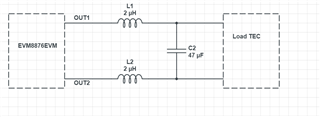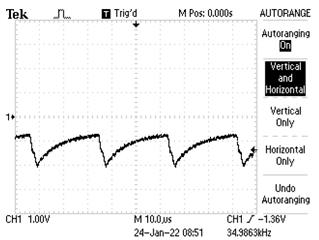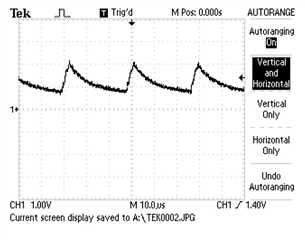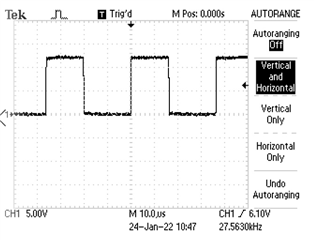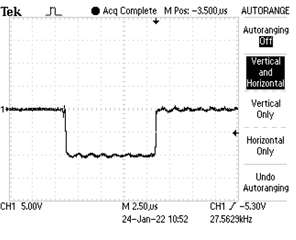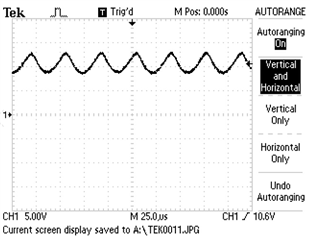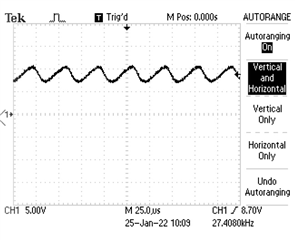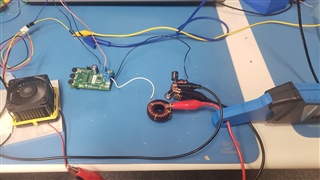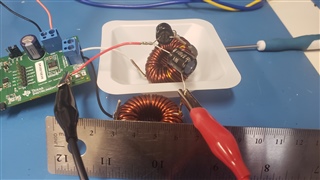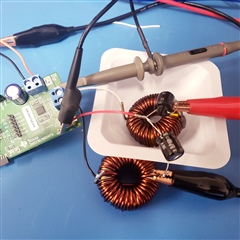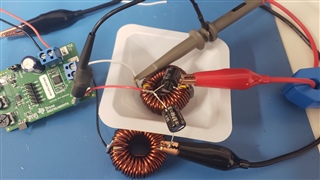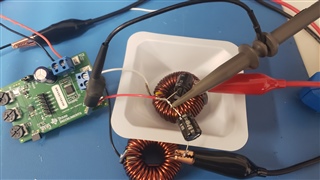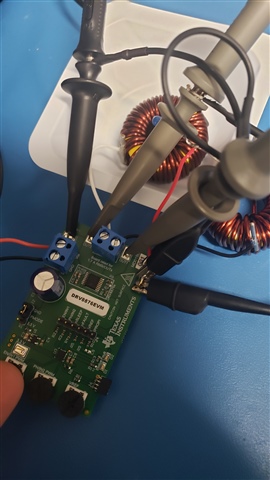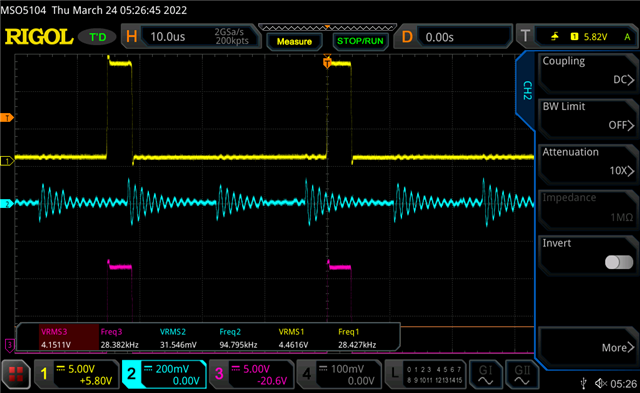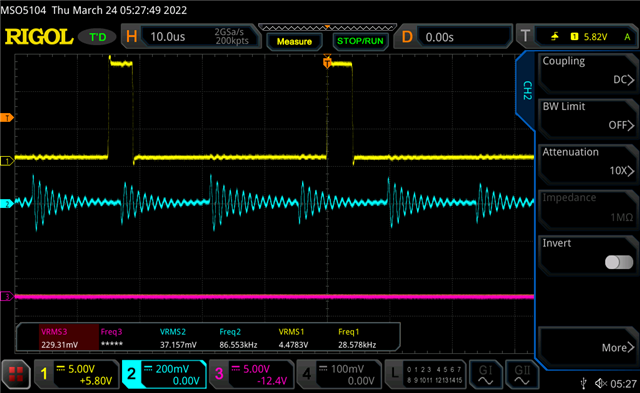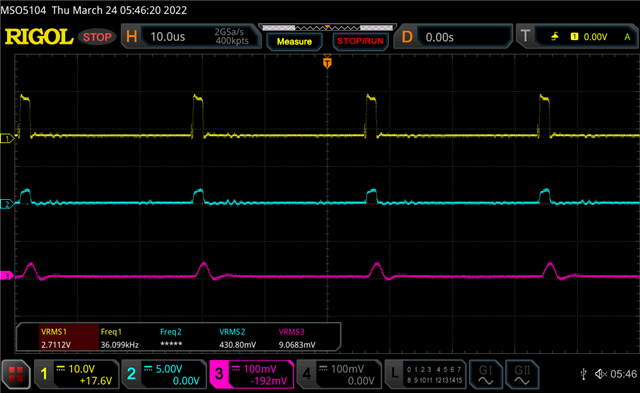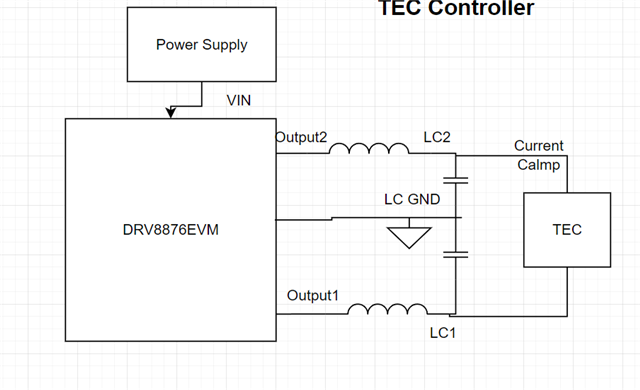Other Parts Discussed in Thread: DRV592, DRV8876, DRV8412
Hi
I just receive on of DRV8876EVM and it work fine but I have problem when I connect LC circuit to it the fault light turns on.
scope: we are trying to run TEC with this h bridge, but in order to smoot pwm we using inductor and capacitor as LC circuit.
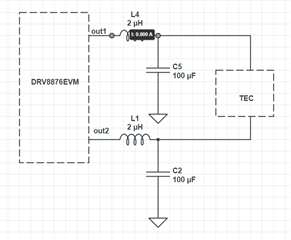
Base on my simulation, I should be able to smooth the 100khz pwm to sign way signal.
The cut of frequency I pick was around 707hz and inductor of 2uh and capacitor of 47uF
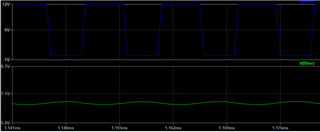
Please let me know if you need any other information.



